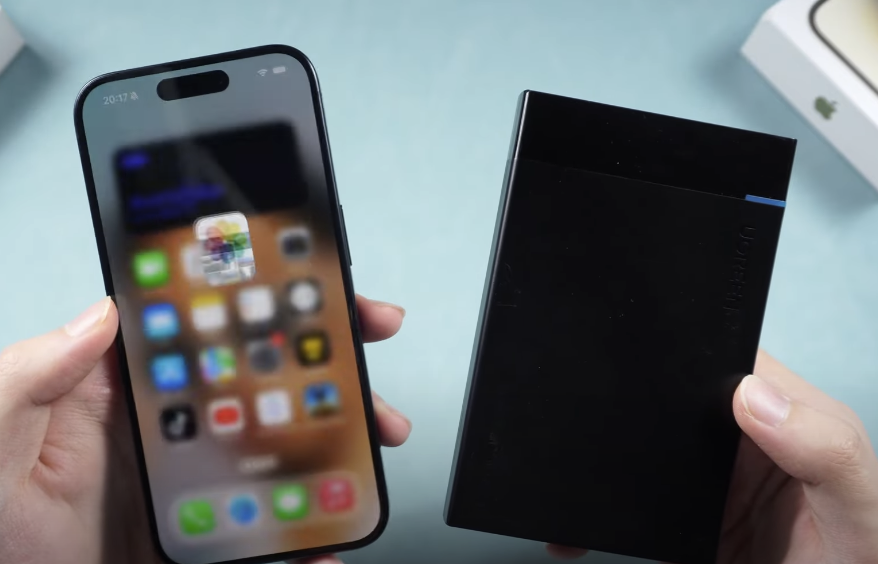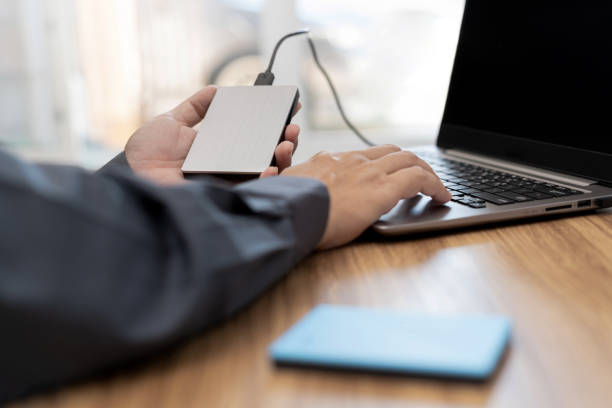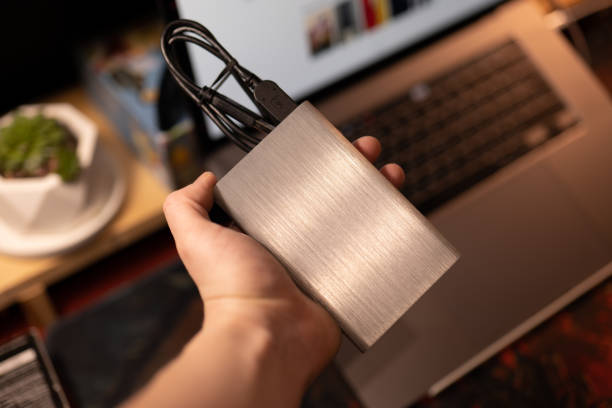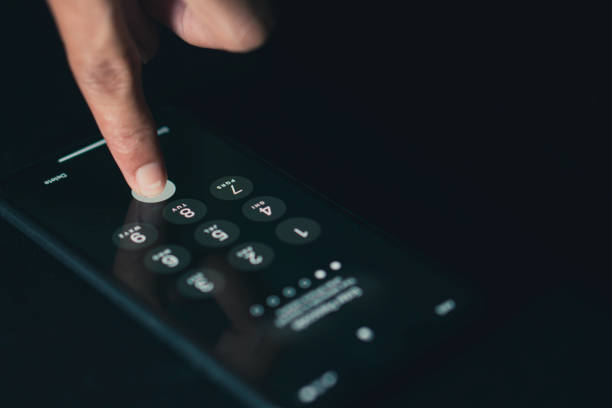With data being the monarch in today’s time, it is essential for all users to back up their iPhone data. An often asked query that arises is if an individual can backup their iPhone into an external hard drive; the answer to which is affirmative. The following guide will demonstrate how one can ensure protection of their cherished iPhone information by shifting it onto an external hard drive. This process not only eliminates clutter from your device but also provides a dependable copy of your valuable details in events such as loss or damage of devices occurring with compromised storage media due to corruption.
Understanding the Need for External Backups
Before diving into the technicalities, it’s essential to understand why backing up your iPhone to an external hard drive is beneficial:
Security
When considering external backups, security remains a top priority. External hard drives provide robust security measures through:
- Physical Isolation: By storing data offline, external hard drives significantly reduce the risk of cyber threats such as hacking and malware attacks.
- Controlled Access: Users have direct control over who can access the data stored on the external hard drive, enhancing privacy and security measures.
Ensuring the integrity and confidentiality of your backups is crucial, especially when dealing with sensitive information or personal data. By utilizing external hard drives, you can mitigate the vulnerabilities associated with online storage solutions and maintain peace of mind regarding data security.
Capacity
The capacity of external hard drives plays a pivotal role in meeting storage needs for various devices and data types. Key aspects include:
- Consolidated Storage: External hard drives offer ample space to consolidate backups from multiple devices into a single, centralized location. This consolidation streamlines data management and enhances organizational efficiency.
- Scalability: As data storage requirements grow over time, external hard drives provide flexibility through expandable storage options. Upgrading to larger capacity drives ensures continuity in data backup operations without compromising performance.
By leveraging the expansive storage capabilities of external hard drives, users can efficiently manage and safeguard their data assets while accommodating future growth and technological advancements.
Convenience
The convenience of external backups stems from their accessibility and operational simplicity. Key advantages include:
- Offline Accessibility: Data stored on external hard drives is readily accessible without dependence on internet connectivity. This accessibility ensures immediate retrieval of data whenever needed, regardless of online service availability.
- Portability: External hard drives are lightweight and portable, facilitating easy transport and deployment across different locations. This portability enables users to carry their backups conveniently and securely, enhancing data accessibility and continuity.
The seamless integration of convenience features makes external hard drives an ideal choice for individuals and organizations seeking reliable and user-friendly backup solutions.
Cost-Effectiveness
In addition to security and convenience, external backups offer significant cost-saving benefits over time. Considerations include:
- Upfront Investment: External hard drives require a one-time purchase investment, eliminating recurring subscription fees associated with cloud storage services. This upfront cost structure provides long-term financial savings and predictable expenditure management.
- No Monthly Charges: Once acquired, external hard drives do not incur ongoing costs for data storage or access. This cost-effectiveness ensures affordability and operational efficiency without continuous financial commitments.
By adopting external hard drives for backup purposes, users can achieve substantial cost savings while maintaining high standards of data security and accessibility. This approach aligns with prudent financial management practices and supports sustainable data management strategies.
Preparing to Backup Your iPhone to an External Hard Drive

Before you begin the backup process, ensure you have the following:
External Hard Drive
When preparing to back up your iPhone to an external hard drive, selecting the right external hard drive is crucial for ensuring reliable storage and accessibility of your backup data. Consider the following aspects:
- Storage Capacity: Choose an external hard drive with sufficient storage capacity to accommodate not only your current backup needs but also future growth in data size. This ensures that all your iPhone data, including photos, videos, apps, and settings, can be securely stored without running out of space.
- Data Transfer Speed: Opt for an external hard drive that supports fast data transfer speeds, such as USB 3.0 or Thunderbolt interfaces. Faster transfer speeds expedite the backup process, saving you time and improving overall efficiency.
- Durability and Portability: Look for a durable external hard drive that can withstand everyday use and transport. Portability is also key, allowing you to easily carry and access your backup data wherever you go for added convenience and security.
Computer (Mac or PC)
Your computer serves as the command center for managing the backup process. Here’s what you need to consider:
- Operating System Compatibility: Ensure your computer is compatible with the latest version of iTunes and supports the operating system required by your iPhone model. This compatibility ensures seamless communication and data transfer between your devices.
- Storage Availability: Check that your computer has sufficient free space to temporarily store the backup files during the transfer process. This prevents interruptions and ensures the backup completes successfully without running into storage issues.
- Processing Power: A computer with adequate processing power enhances the speed and efficiency of data backup operations. This is especially important when dealing with large amounts of data or performing simultaneous tasks during the backup process.
Latest Version of iTunes
iTunes remains the cornerstone software for managing iOS devices and their backups. Here’s why having the latest version is crucial:
- Feature Compatibility: The latest iTunes version ensures compatibility with the newest iPhone models and iOS updates, allowing you to leverage all the latest features and improvements.
- Security Updates: Regular updates to iTunes include essential security patches and bug fixes, safeguarding your data against potential vulnerabilities and ensuring a secure backup process.
- Backup Customization: Updated versions of iTunes often introduce new backup customization options, giving you more control over which data to include in your backups and how frequently backups are performed.
Lightning Cable
The Lightning cable is essential for establishing a physical connection between your iPhone and computer. Here’s what you should keep in mind:
- Quality and Authenticity: Use a genuine Lightning cable from Apple or a certified manufacturer to ensure reliability and compatibility. Avoid using damaged or counterfeit cables, as they can lead to connectivity issues and data transfer failures.
- Data Transfer Speed: Choose a Lightning cable that supports high-speed data transfer rates, enabling faster backup operations. This is particularly beneficial when backing up large files or extensive amounts of data from your iPhone.
- Backup Integrity: Regularly inspect your Lightning cable for wear and tear, such as fraying or exposed wires, which can compromise data transfer reliability. Replace cables promptly if signs of damage are detected to maintain uninterrupted backup processes.
Step-by-Step Guide to Backup iPhone to External Hard Drive
Backing up your iPhone to an external hard drive ensures secure storage of your data. Follow these detailed steps for a successful backup process:
Connect Your External Hard Drive
Before initiating the backup process, it’s crucial to ensure your external hard drive is connected and prepared for seamless data storage:
- Action: Connect the external hard drive to your computer using a compatible cable, such as USB-C or Thunderbolt.
- Objective: Verify that the external hard drive is recognized by your computer’s operating system. Ensure it is formatted correctly to support data storage and backups effectively.
Connect Your iPhone to Your Computer
Establish a physical connection between your iPhone and computer to facilitate data transfer:
- Action: Use a Lightning cable to connect your iPhone to a USB port on your computer.
- Objective: Enable direct communication between your iPhone and iTunes, allowing for the backup of essential data and settings.
Open iTunes and Select Your Device
Launch iTunes on your computer and locate your iPhone within the application interface:
- Action: Open iTunes and wait for it to detect your iPhone automatically.
- Objective: Identify your iPhone listed under the ‘Devices’ section within iTunes. This step ensures that your device is ready and recognized for backup operations.
Initiate Backup in iTunes
Prepare to back up your iPhone’s data using the iTunes software for comprehensive data management:
- Action: Navigate to the ‘Summary’ tab dedicated to your iPhone within the iTunes interface.
- Objective: Click on the prominent ‘Back Up Now’ button to initiate the backup process directly to your computer’s local storage.
Enable Encryption for Added Security
Enhance the security measures of your iPhone’s backup by enabling encryption for sensitive data:
- Action: Ensure to check the box labeled ‘Encrypt iPhone backup’ available within the iTunes settings.
- Objective: Encrypt vital information stored within your backup, including passwords and health data, to safeguard against unauthorized access and breaches.
Change Backup Location to External Hard Drive
Redirect the storage destination of your iPhone’s backup from your computer to the external hard drive for optimized data management:
- Action: Adjust the backup settings within iTunes preferences or system settings to designate the external hard drive as the new backup location.
- Objective: Selecting the external hard drive ensures efficient utilization of storage space on your computer while enhancing accessibility and security of your backed-up iPhone data.
Changing the iTunes Backup Directory to an External Hard Drive

Redirecting your iTunes backup directory to an external hard drive can significantly free up space on your computer’s internal storage. Here’s how Mac and Windows users can set up their systems to make this change effectively.
For Mac Users
To change the iTunes backup directory on a Mac, you’ll need to create a symbolic link—a sort of shortcut—that tells iTunes where to send the backup files. This process involves using the Terminal app to enter specific commands.
- Close iTunes: Make sure iTunes is completely shut down to avoid any conflicts.
- Open Terminal: You can find Terminal in Applications > Utilities.
- Input the Symbolic Link Command: Type the command below to create a symbolic link. Replace ExternalDrive with the name of your external hard drive.
ln -s /Volumes/ExternalDrive/iTunesBackup ~/Library/Application\ Support/MobileSync/Backup- Reopen iTunes: Once the symbolic link is set up, open iTunes to ensure it recognizes the new backup path.
- Test the Backup: Connect your device and try backing up to verify that iTunes is using the new location on your external hard drive.
For Windows Users
Windows users will change the iTunes backup directory by moving the original backup folder to an external hard drive and then linking it back to the default location via Command Prompt.
- Close iTunes: Ensure iTunes is not running to prevent any data corruption.
- Navigate to the Backup Directory: Use File Explorer to go to C:\Users\[YourUsername]\AppData\Roaming\Apple Computer\MobileSync\Backup.
- Move the Backup Folder: Cut and paste the Backup folder to your external hard drive (e.g., E:\iTunesBackup).
- Create a Symbolic Link with Command Prompt: Open Command Prompt and type:
mklink /D "C:\Users\[YourUsername]\AppData\Roaming\Apple Computer\MobileSync\Backup" "E:\iTunesBackup"- Reopen iTunes: Start iTunes and check under Edit > Preferences > Devices to ensure the new backup location is recognized.
- Perform a Backup: Try performing a backup to confirm that everything is set up correctly.
Verifying the Backup on Your External Hard Drive
Once your backup is complete, verify the backup to ensure that all necessary data has been successfully transferred:
Access the External Hard Drive
Connect your external hard drive to your computer to begin the verification process. It’s important to ensure that the drive is properly connected and recognized by your computer to access the backup files.
- Ensure Proper Connection: Verify that the external hard drive is connected via USB or another interface and that your computer recognizes it.
- Check Drive Health: Use disk utility tools to ensure the drive is functioning correctly without any errors.
- Verify Drive Format: Confirm that the drive format is compatible with your operating system for smooth file access.
Locate the Backup Folder
Once you’ve accessed the external hard drive, the next step is to locate the directory where the iTunes backup is stored. This location depends on how you set up the backup process.
- Navigate to the iTunes Backup Folder: Use your system’s file explorer to navigate to the expected backup folder location.
- Check for Proper Folder Structure: Ensure that the backup folder structure is intact, with all files organized as expected.
- Identify Multiple Backup Folders: If you have backed up multiple devices, ensure each device’s backup is correctly labeled and stored.
Check for Backup Files
After locating the backup folder, examine the contents to ensure all necessary backup files are present and intact.
- Inspect File Sizes and Types: Check that the file sizes seem appropriate for what you would expect from a complete device backup (e.g., large enough to encompass all data).
- Look for Recent Files: Ensure the files’ timestamps reflect the most recent backup date.
- Verify Data Integrity: If possible, open some of the backup files (like smaller configuration files) to make sure they are not corrupted.
Maintaining Your External Hard Drive Backup
Regular backups, optimal storage conditions, and updated software are crucial components of a robust data preservation strategy. Here’s a detailed guide to effectively maintaining your external hard drive backup.
Regular Backups
Ensuring that your data is up-to-date on the external hard drive is vital. Regular backups protect against data loss from hardware failures, software problems, or accidental deletions.
- Set a Backup Schedule: Establish a consistent schedule for your backups. Depending on the frequency of data change, you might choose daily, weekly, or monthly backups.
- Automate the Backup Process: Use software that supports automatic backups at set intervals. This reduces the risk of forgetting to perform backups manually.
- Verify Backups: After each backup session, verify that the data has been correctly copied and is readable. This step is crucial for ensuring the integrity of your backups.
Storage Conditions
The physical environment where you store your external hard drive can significantly impact its performance and lifespan. Proper storage conditions are necessary to prevent data loss due to environmental factors.
- Avoid Extreme Temperatures: Keep your external hard drive in an environment that maintains a consistent and moderate temperature. Extreme heat or cold can damage the drive’s components.
- Control Humidity Levels: High humidity can lead to moisture buildup inside the drive, which might cause electrical failures. Store the drive in a dry location.
- Minimize Exposure to Dust and Dirt: Dust and dirt can accumulate and potentially harm the drive’s internal mechanisms. Use a protective case or store the drive in a clean, enclosed space.
- Physical Security: To prevent theft or accidental damage, keep the external hard drive in a secure, stable location where it is not likely to be knocked over or mishandled.
Update Software
Using the latest software for backups not only enhances security but also ensures compatibility and efficiency. Keeping backup and security software up to date is crucial in protecting your data.
- Regular Software Updates: Install updates for your backup software as soon as they become available. These updates can fix bugs, improve performance, and enhance security features.
- Use Reliable Security Software: Employ robust antivirus and anti-malware software to protect the data on your external hard drive. Regularly update this software to defend against new threats.
- Check for Compatibility: After updating your operating system or backup software, check for compatibility issues that might affect backup processes or data retrieval.
Conclusion
Backing up your iPhone to an external hard drive is a wise decision to safeguard your personal data. By following the steps outlined in this guide, you can ensure that your data is secure and accessible whenever you need it. Remember, the question is not just “Can you backup iPhone to external hard drive?” but how often and effectively you implement this process to protect your digital life.
FAQ
Yes, you can backup multiple devices to the same drive, just ensure you have enough storage space.
It’s recommended to backup your iPhone at least once a month or after significant data changes.
No, currently, you cannot directly backup an iPhone to an external hard drive without using a computer as an intermediary.
Ensure your devices are properly connected, check for sufficient storage space, and try restarting the backup process.




